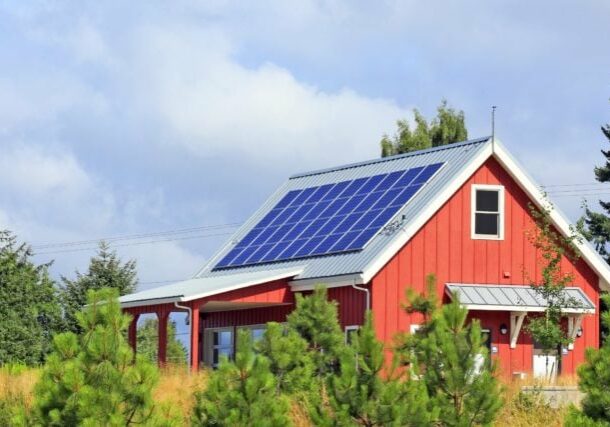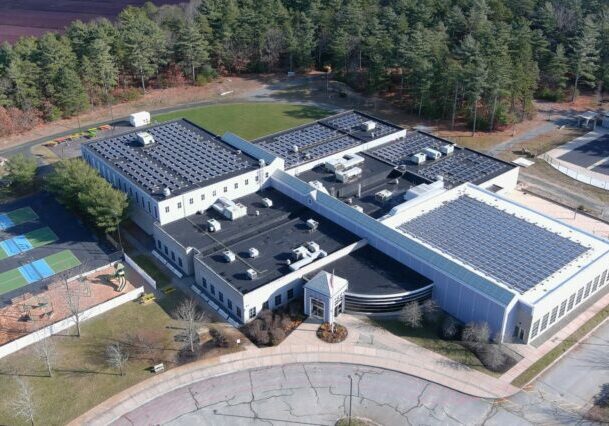June 24, 2019
Small Solar and Battery Storage Systems are Toppling Power Plants
By Seth Mullendore
From Florida to Nevada to California, big battery projects have been making headlines lately. But a more groundbreaking movement has received far less media attention – hundreds, in some cases thousands, of small distributed solar and battery systems working together to tackle power plant-sized problems.
One of the most significant and high-profile examples of this was the announcement that a residential solar and storage company won a big contract to provide energy capacity in the Northeast. The regional grid operator for New England, ISO-NE, holds regular auctions to make sure there’s enough resources on the power grid to meet expected future electricity demand. Companies submit bids and ISO-NE picks the lowest-cost combination of resources.
This forward capacity auction is traditionally the realm of big power plants. That changed in February 2019 when Sunrun’s 20-megawatt bid of aggregated residential solar+storage systems was among the auction winners. The 20-megawatt bid represents around 5,000 home solar+storage systems. That means the revenue from those systems is going to be shared among thousands of households across New England, instead of going to one power plant operator. And unlike a big power plant, those 5,000 systems will directly lower electricity bills for households every month and be able to deliver backup power to families in the event of a grid outage.
Sunrun has also put together a plan to replace power plants in California. In April, the company released an analysis detailing how the utility serving Los Angeles could replace large retiring gas plants with 75,000 home solar+storage systems. Sunrun estimates that solar+storage could be installed in 150,000 homes and 5,000 apartment buildings across the Greater Los Angeles area by 2030.
Little batteries replacing big power plants is more than just a theory in California. Southern California Edison selected a portfolio of energy storage projects as an alternative to a 262-megawatt gas peaker plant that the utility had originally chosen to meet local resource needs. Opposition by local and state environmental justice groups forced the utility to reconsider its support for another power plant in the already environmentally overburdened community of Oxnard, California. The portfolio of alternatives does include a big battery – a 100-megawatt system – but it also includes 14 megawatts of aggregated small systems from the home storage company Swell Energy.
Some utilities are promoting small systems to reduce their costs. Vermont utility Green Mountain Power (GMP) has implemented several battery storage programs for its customers. Through their latest offering, the Resilient Home program, GMP customers can get a Tesla Powerwall for $15 per month, or two Powerwalls – enough to support the entire home in a grid outage – for $30 per month. According to GMP president and CEO Mary Powell, the utility has a vision of placing “a battery system in every single home.” A grant from the Vermont Low Income Trust for Electricity is even paying for 100 batteries to be installed in low-income households that are dependent on electricity for medical needs. GMP already has more than 1,000 home battery systems in place across its network. Last year, the utility saved over $750,000 by tapping into those systems and a large battery installation to reduce peak electricity demand. Similar battery programs are in place in Massachusetts, New Hampshire, and Rhode Island, and have been proposed in Connecticut.
This de-centralization of the energy system is important for many reasons:
- it creates a more robust system by reducing big points of failure – like giant power plants – and increases local energy resilience when grid failures do occur;
- it democratizes the energy system by empowering consumers to also be energy producers; and
- it creates opportunities for everyone to participate in and profit from the clean energy transition currently underway, not just a handful of big project developers and their shareholders.
Small solar+storage systems on their own may not be enough to tackle the climate crisis we’re currently facing. But they are an important piece of the solution – one that often gets overlooked and undervalued by utilities and policy makers and rarely gets the attention it deserves. A problem this big needs both large and small solutions. To solve it in a just and equitable way, small solutions must play an outsized role.
This blog was also posted in Renewable Energy World.














